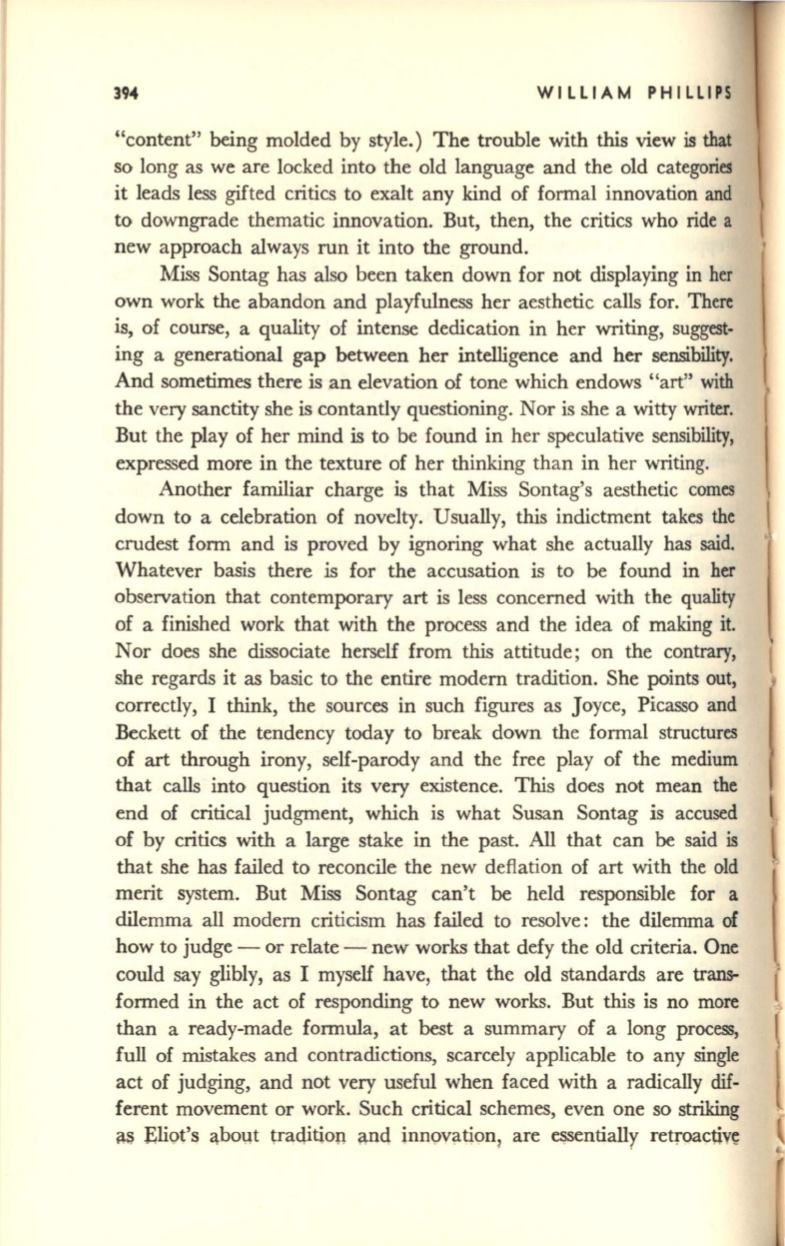
394
WILLIAM PHILLIPS
"content" being molded by style.) The trouble with this view
is that
so long as we are locked into the old language and the old
categori~
it leads less gifted critics to exalt any kind of formal innovation and
to downgrade thematic innovation. But, then, the critics who ride a
new approach always run it into the ground.
Miss Sontag has also been taken down for not displaying in her
own work the abandon and playfulness her aesthetic calls for. There
is, of course, a quality of intense dedication in her writing, suggest–
ing a generational gap between her intelligence and her sensibility.
And sometimes there is an elevation of tone which endows "art" with
the very sanctity she
is
contantly questioning. Nor is she a witty
writer.
But the play of her mind
is
to be found in her speculative sensibility,
expressed more in the texture of her thinking than in her writing.
Another familiar charge is that Miss Sontag's aesthetic comes
down to a celebration of novelty. Usually, this indictment takes the
crudest form and is proved by ignoring what she actually has said.
Whatever basis there
is
for the accusation is to be found in her
observation that contemporary art is less concerned with the quality
of a finished work that with the process and the idea of making it.
Nor does she dissociate herself from this attitude; on the contrary,
she regards it as basic to the entire modem tradition. She points out,
correctly, I think, the sources in such figures as Joyce, Picasso and
Beckett of the tendency today to break down the formal structures
of
art
through irony, self-parody and the free play of the medium
that calls into question its very existence. This does not mean the
end of critical judgment, which is what Susan Sontag is accused
of by critics with a large stake in the past. All that can be said
is
that she has failed to reconcile the new deflation of
art
with the old
merit system. But Miss Sontag can't be held responsible for a
dilemma all modem criticism has failed to resolve: the dilemma of
how to judge - or relate - new works that defy the old criteria. One
could say glibly, as I myself have, that the old standards are
trans–
formed in the act of responding to new works. But this is no more
than a ready-made formula, at best a summary of a long process,
full of mistakes and contradictions, scarcely applicable to any single
act of judging, and not very useful when faced with a radically
dif–
ferent movement or work. Such critical schemes, even one so striking
a~
Eliot's qboqt tradition and innovation are essentially
retroactiv~


